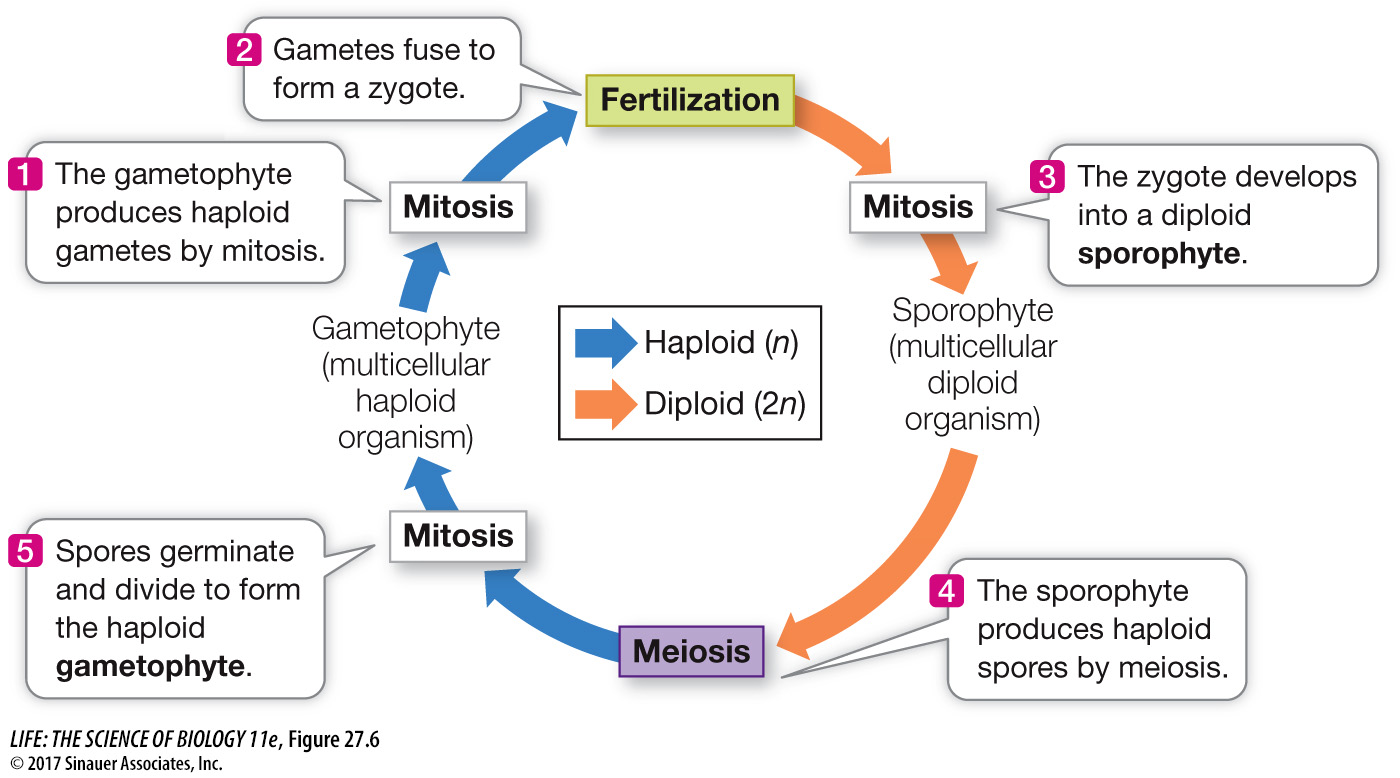Life cycles of land plants feature alternation of generations
A universal feature of the life cycles of land plants is alternation of generations. Recall from Key Concept 26.3 the two hallmarks of alternation of generations:
The life cycle includes both a multicellular diploid stage and a multicellular haploid stage.
Gametes are produced by mitosis, not by meiosis. Meiosis produces spores that develop into multicellular haploid organisms.
If we begin looking at the land plant life cycle at the single-
Cells contained within specialized reproductive organs of the sporophyte, called sporangia (singular sporangium), undergo meiosis to produce haploid, unicellular spores. By mitosis and cytokinesis, a spore develops into a haploid plant. This multicellular haploid plant, called the gametophyte (“gamete plant”), produces haploid gametes by mitosis. The fusion of two gametes (fertilization) forms a single diploid cell—

Q: What is a major difference in the haploid portion of the life cycle of plants and animals?
In plants, the haploid portion of the life cycle involves a multicellular organism, whereas in animals it involves only single-
The sporophyte generation extends from the zygote through the adult multicellular diploid plant and sporangium formation. In contrast, the gametophyte generation extends from the spore through the adult multicellular haploid plant to the gametes. The transitions between the generations are accomplished by fertilization and by meiosis. In all land plants, the sporophyte and the gametophyte differ genetically: the sporophyte has diploid cells, and the gametophyte has haploid cells.
There is a trend toward reduction of the gametophyte generation in plant evolution. In the nonvascular land plants, the gametophyte is larger, longer-